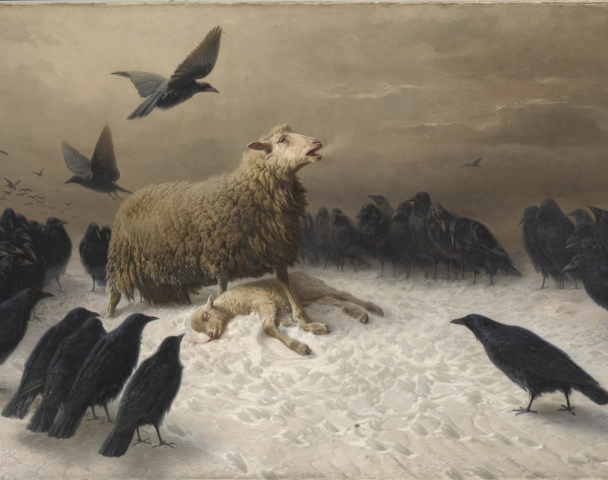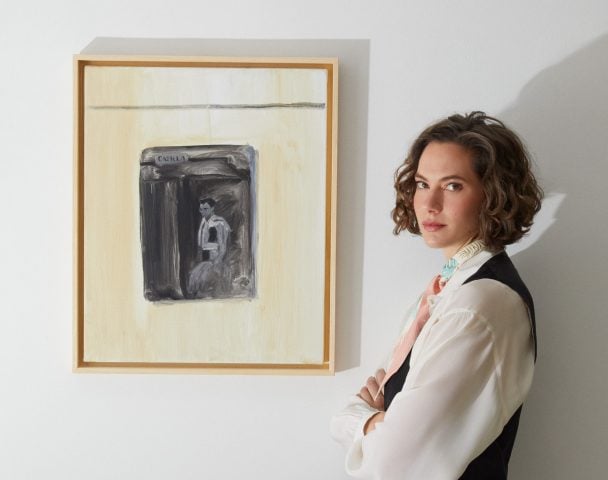Art World
Art Bites: What Donatello’s ‘David’ Did For the Nude Sculpture
Donatello’s smaller, bronze sculpture of the Biblical hero David inspired Michelangelo’s marble giant.
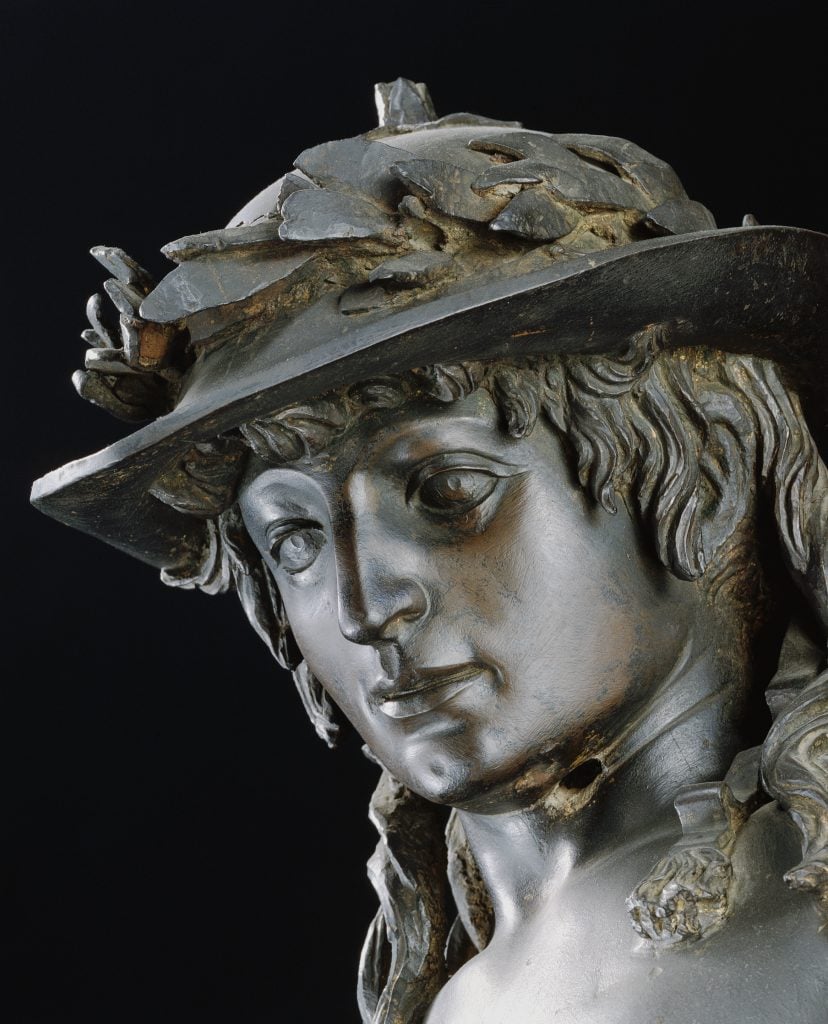
What’s the deal with Leonardo’s harpsichord-viola? Why were Impressionists obsessed with the color purple? Art Bites brings you a surprising fact, lesser-known anecdote, or curious event from art history. These delightful nuggets shed light on the lives of famed artists and decode their practices, while adding new layers of intrigue to celebrated masterpieces.
When it comes to statues of David, the Biblical shepherd who defeats the philistine giant Goliath with only a slingshot, few can stand up to Michelangelo’s 17-foot giant at the Accademia Gallery of Florence. But while this particular David is among the most iconic artworks to come out of the Italian Renaissance, its artistic and historical significance arguably pales in comparison to a smaller bronze sculpture made by another Florentine artist, Donatello.
Donatello’s David looks quite different from Michelangelo’s. Sure, both assume the same contrapposto stance favored by Renaissance artists, and are holding on to the stone they would have used to slay their adversary, but the similarities end there. Where Michelangelo sculpted David by himself, Donatello shows the hero standing before Goliath’s severed head with sword in hand. Where Michelangelo’s looks pensive and stoic, Donatello’s sports a confident smirk.
Donatello is believed to have sculpted David between 1430 and 1450, having received a commission from Cosimo de’ Medici. The story of David and Goliath was a popular theme in Florentine art, representing the city-state’s defiance against the rest of Italy. It must have held additional meaning to Cosimo, a successful banker who, through his capital and cunning, established the Medici family as de facto and later de jure rulers of Florence.
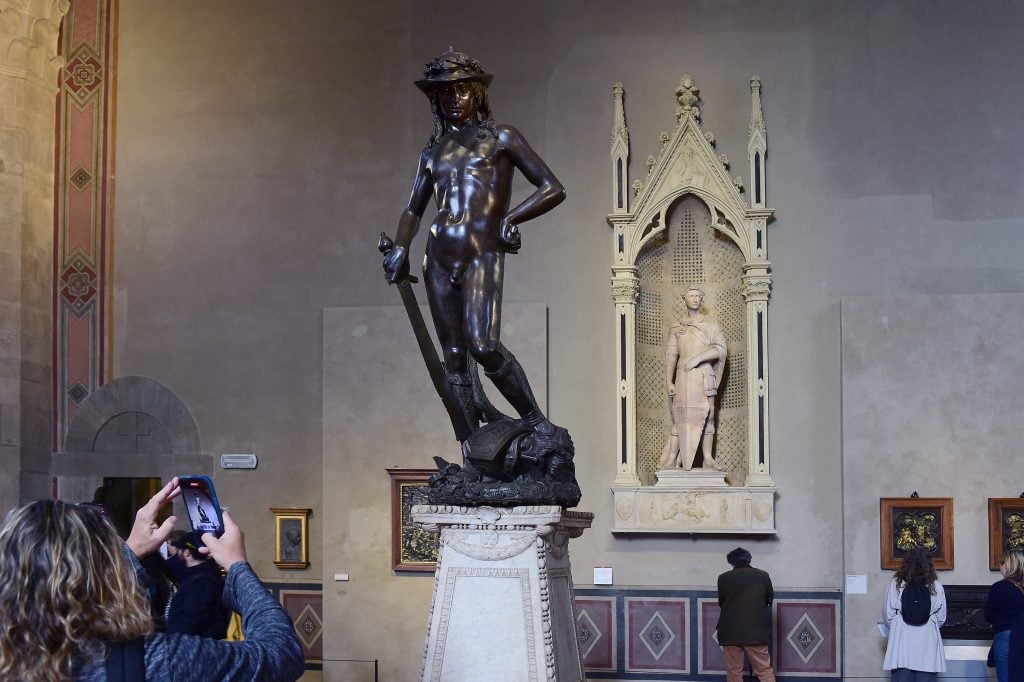
Donatelloi’s David on view at Bargello Museum in Florence, Italy, 2023. Photo: Roberto Serra – Iguana Press/Getty Images.
Artistically, Donatello’s David broke new ground by being the first male, nude, free-standing European statue since classical antiquity. While nudity is a common feature in art from ancient Greece and Rome, whose artists obsessed over anatomical detail, it is much rarer in art from the Medieval period, when the sight of flesh became associated with lust. If nudity was portrayed at all, an article from Westchester Community College noted, “the emphasis was on shame and sin, rather than triumph or heroism.”
“Unlike paganism,” art historian Jean Sorabella of the Met Museum elaborated, “Christianity required no images of naked divinities, and new attitudes cast doubt and opprobrium on nude athletics, public bathing, and the very value of the human body. The early Christian emphasis on chastity and celibacy further discounted depictions of nakedness. In this climate, there was little motive to study the nude, and unclothed figures are thus rare in medieval art.”
This changed during the Renaissance, when the rediscovery of Greek and Roman art led to a revitalized interest in the cultural norms and philosophical ideas of the ancient world. Donatello was among the movement’s leaders, presenting a Biblical character in the guise of a Greek mythological hero, nakedness and all.
This bold move raised questions in Donatello’s time as well as in ours, with some scholars questioning the artist’s sexuality. Certain details, like David’s pose, the feather of Goliath’s helmet touching his inner thigh, and semblance to another of Donatello’s sculptures showing the Greek heroine Judith with the head of Holofernes, have led to speculation that this version of David defeated Goliath through seduction rather than combat.
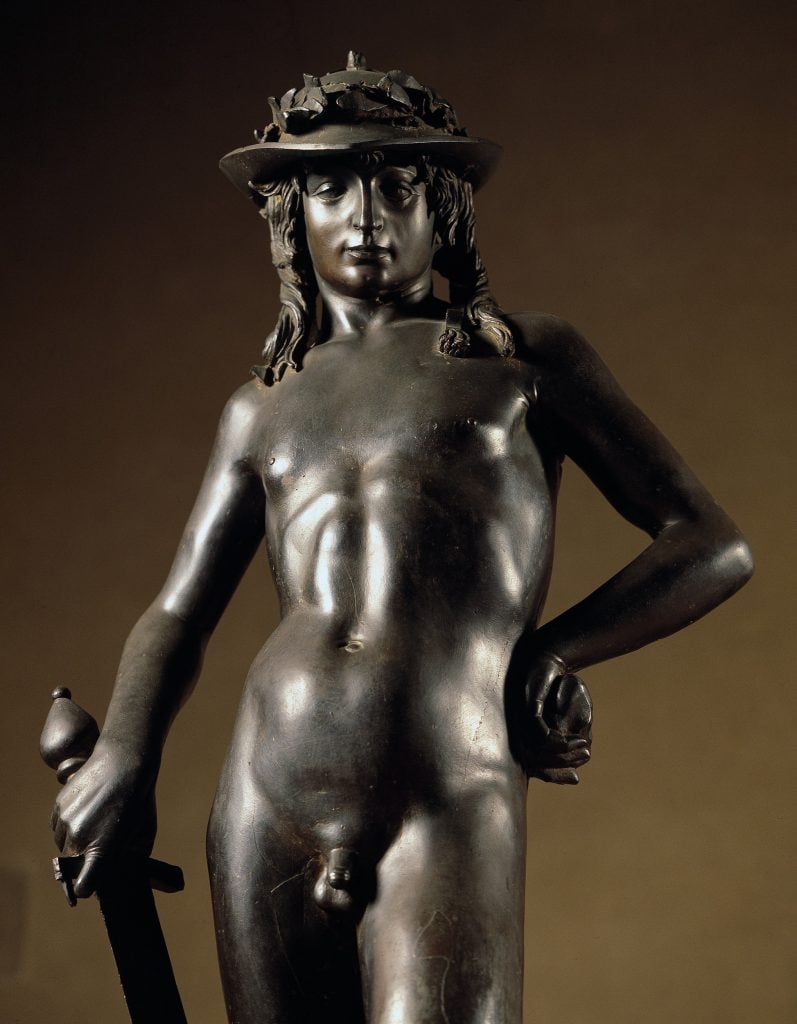
Detail of David by Donatello. Photo: Leemage/Corbis via Getty Images.
Such an interpretation is not unthinkable. Mulling over testimonies and gossip from Donatello’s contemporaries, art historian H.W. Janson learned that the artist had a reputation for falling in love with his young male models and apprentices, pursuing them even after they left Florence. The city-state also boasts a long and rich queer history. Historian Michael Rocke described it as a “capital of sodomites,” noting that the average 15th-century Florentine was “at least once during their lifetimes officially incriminated for engaging in homosexual relations.”
Regardless of Donatello’s intentions, David went on to inspire many other Renaissance sculptors, including Andre del Verrocchio—who would provide the Medicis with another bronze statue of David a decade later—and, of course, Michelangelo.




